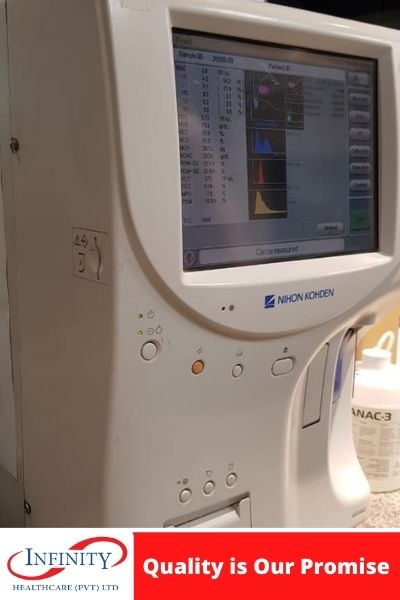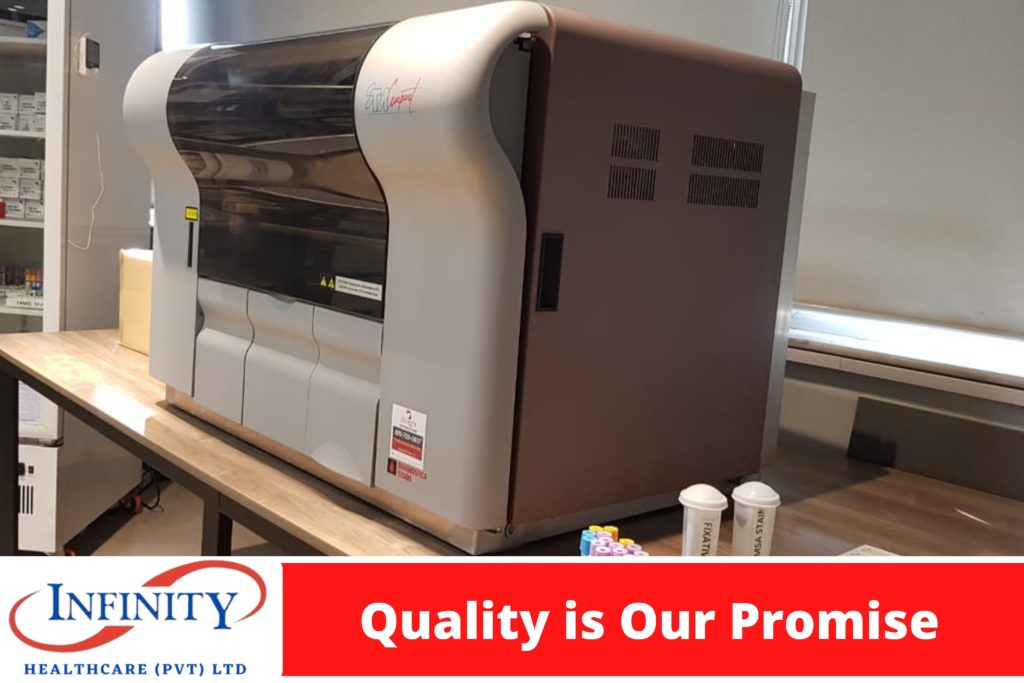


Laboratory hematology encompasses all blood tests, and provides both quantitative and qualitative characteristics of analysed blood.The work of hematologists is usually divided into three areas:
- diagnosis of hematological disorders
- management of hematological disorders
- blood transfusion.
The diagnosis of hematological disorders is based on clinical history and examination, measurement of parameters in the blood, and microscopic examination of blood films, bone marrow aspirates and trephine samples. Automated machines measure multiple parameters in samples of blood; the most common are:
- Hb concentration
- Red cell count
- Hematocrit
- red cell indices (MCV, mean corpuscular volume; MCHC, mean corpuscular Hb concentration)
- white cell count, differential count (WCC, DIFF)
- platelet count and thrombocyte indices (MPV, mean platelet volume)
- coagulation screening
- fibrinogen concentration.
Examination of a blood smear gives information about the number and shape of blood cells as an integral part of a hemogram. It allows quantitation of the different types of leukocytes (DIFF), estimation of the platelet count, and detection of morphologic abnormalities which may reflect physiological processes or diseases. Blood film can reveal abnormalities of red blood cell shape and size (e.g. anisocytosis, poikilocytosis, macrocytosis; seeCh. 23) and abnormal white blood cells such as blast cells in leukaemia.Some features, such as rouleaux formation by red blood cells, may suggest abnormalities in the noncellular components of blood (in this case, possible overproduction of antibodies or immunoglobulin).An essential tool for the diagnosis and follow-up of hematological neoplasms is flow cytometry, used for immunophenotyping. It is based on the identification and counting of single cells labelled with monoclonal antibodies to specific surface or intracellular antigens associated with cell lineage (T lymphocytes/B lymphocytes), cell function (presence of receptors, cytokines) and degree of maturation (i.e. pre-B cells/mature B cells).
Bone marrow examination
Samples of bone marrow can be obtained by aspiration, biopsy or both procedures. A smear of aspirated cells, stained by the Giemsa method, allows identification of bone marrow components, including their relative proportions of cellularity, presence of fibrotic tissue, neoplasms and estimation of iron storage. This is an integral part of the diagnosis of leukaemia and assessment of its response to treatment (Ch. 23). Trephine samples of bone marrow retain the architecture of the tissue and allow assessment of the overall cellularity, amount of reticulin and site of different cell types. These types of samples are essential in diseases that produce fibrosis of the bone marrow, such as myelofibrosis or metastatic prostatic carcinoma, when aspirates will produce a very low cellular yield.
